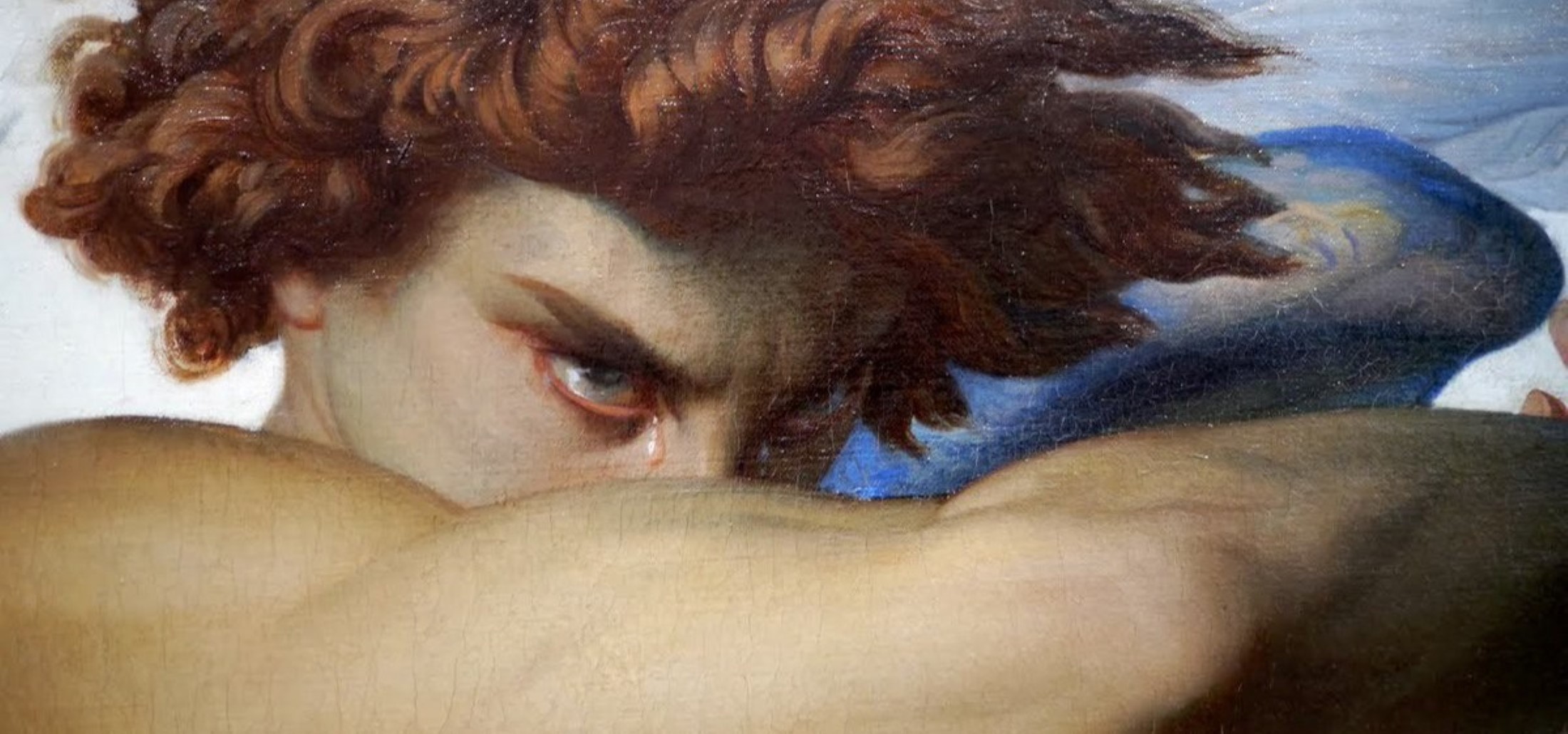
Fallen Angel by Alexandre Cabanel: The story behind the provocative painting
There are numerous examples of paintings that caused huge scandals in Salons across France. The excitement surrounding such controversial paintings has caused problems for artists while simultaneously catapulting them to enduring fame. Here we delve into the story of Alexandre Cabanel, who created one of the most passionate images of the most enigmatic angel.
Who was Alexandre Cabanel?
The French painter Alexandre Cabanel (1823-1889) was one of the most respected academic artists of his time. He proved he had talent at a very young age, having at 11 years old already attended drawing classes at École Supérieure des Beaux-Arts in Montpellier, in southern France.
It’s no wonder that in 1840 he decided to continue his career as an artist and joined the Beaux-Arts in Paris where he quickly became a well-known academic painter with dozens of scholars of his own.
Cabanel enjoyed a successful career as a painter of religious and mythological scenes that aligned with the academic tastes of the 19th century. In 1844, Cabanel debuted at the Salon de Paris with the monumental ‘The Agony of Jesus in Gethsemane’ (1844, Church of Saint-Roch, Montpellier). Later in 1845, he won the Prix de Rome with another biblical scene ‘Jesus in the Praetorium’ (1845), housed at the Musée d’Orsay. All his paintings were extraordinarily skilful and gained respect from the academic jury. However, just like most academic paintings Cabanel’s works lacked emotional intensity until he travelled to Italy.
The turning point in Cabanel’s career
Everything changed after Cabanel’s trip to Italy and receiving the Prix de Rome in 1845. It was not just an honourable award but a special scholarship that allowed artists to live in Rome and study art. It also covered all their expenses, allowing them to concentrate on creating new works of art for the Salon. During this trip, Cabanel lived in Villa Medici where he immersed himself in antique and Renaissance art by copying the masterpieces of masters like Raphael and Michelangelo.
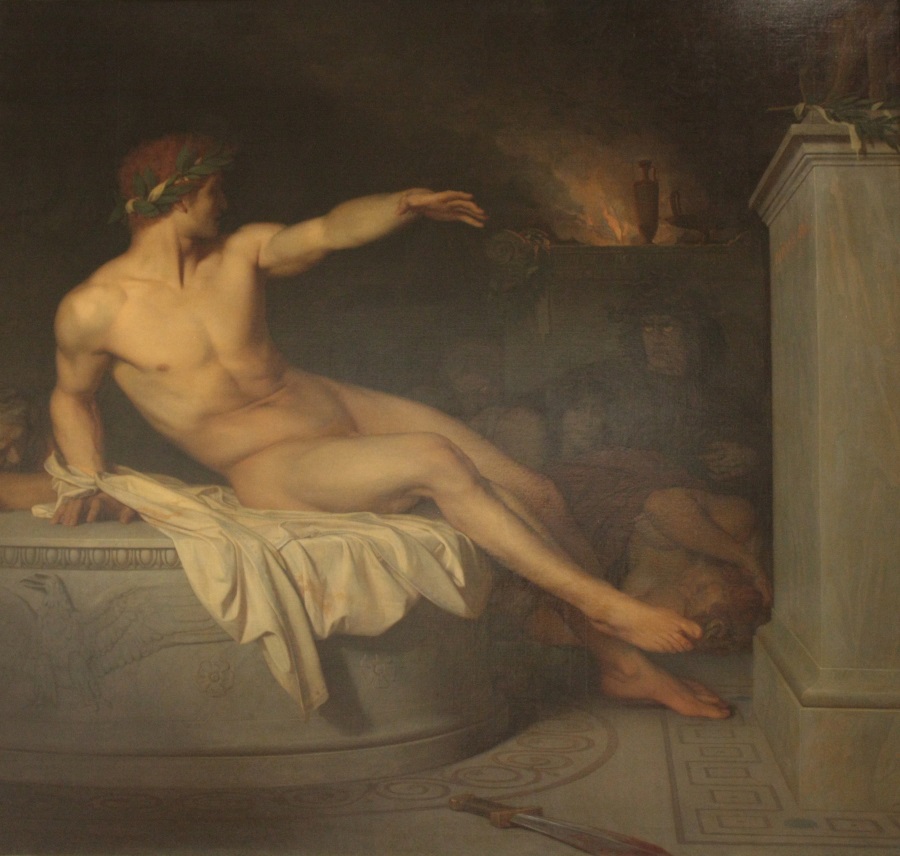 Oreste, Alexander Cabanel, 1846
Oreste, Alexander Cabanel, 1846In Rome, he was inspired by classical Greek theatre and created the large-scale nude ‘Oreste’ (1846), which is housed in the Musée des Beaux-Arts de Béziers in France. It was more passionate than his other works — too passionate, in fact, for the strict academic rules at the time. This painting was his first work rejected from the Paris Salon, due to being considered oversized and having an inept composition. This was also the turning point for the ‘Fallen Angel’ (1847, Musée Fabre, Montpellier) painting which was also created in Rome.
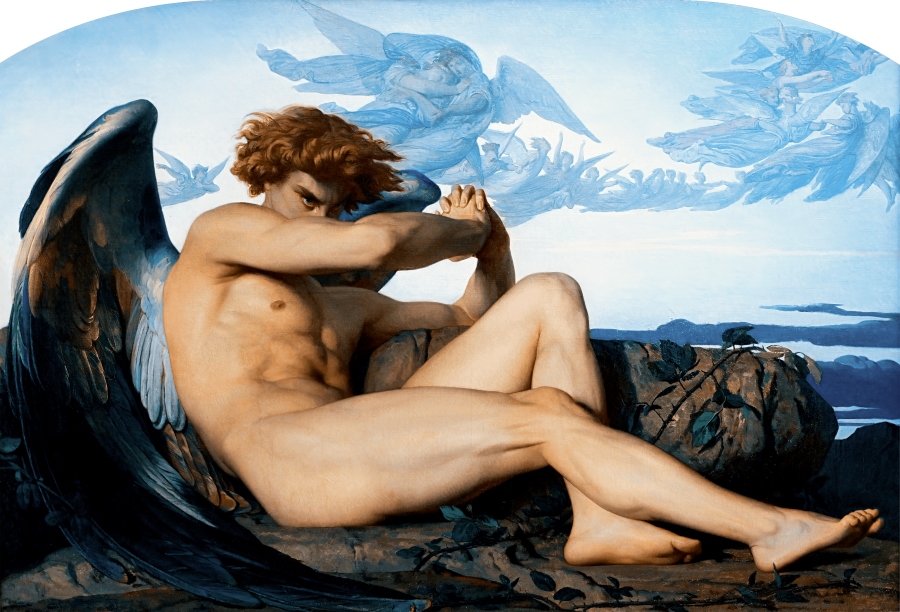 Fallen Angel, Alexander Cabanel, 1847
Fallen Angel, Alexander Cabanel, 1847Who is the fallen angel depicted in the painting?
The main character depicted in ‘Fallen Angel’ is Lucifer, a ‘fallen angel’ who dared to disobey and rebel against God. In religious and popular culture he is also associated with Satan and the Devil and is often referred to as a demon. According to the most popular story, Lucifer was the highest archangel and God’s most beautiful creation. Such circumstances made him question his own powers and his place in the angelic hierarchy. He wanted to be equal to God but eventually was forever cast out of Heaven and imprisoned in Hell.
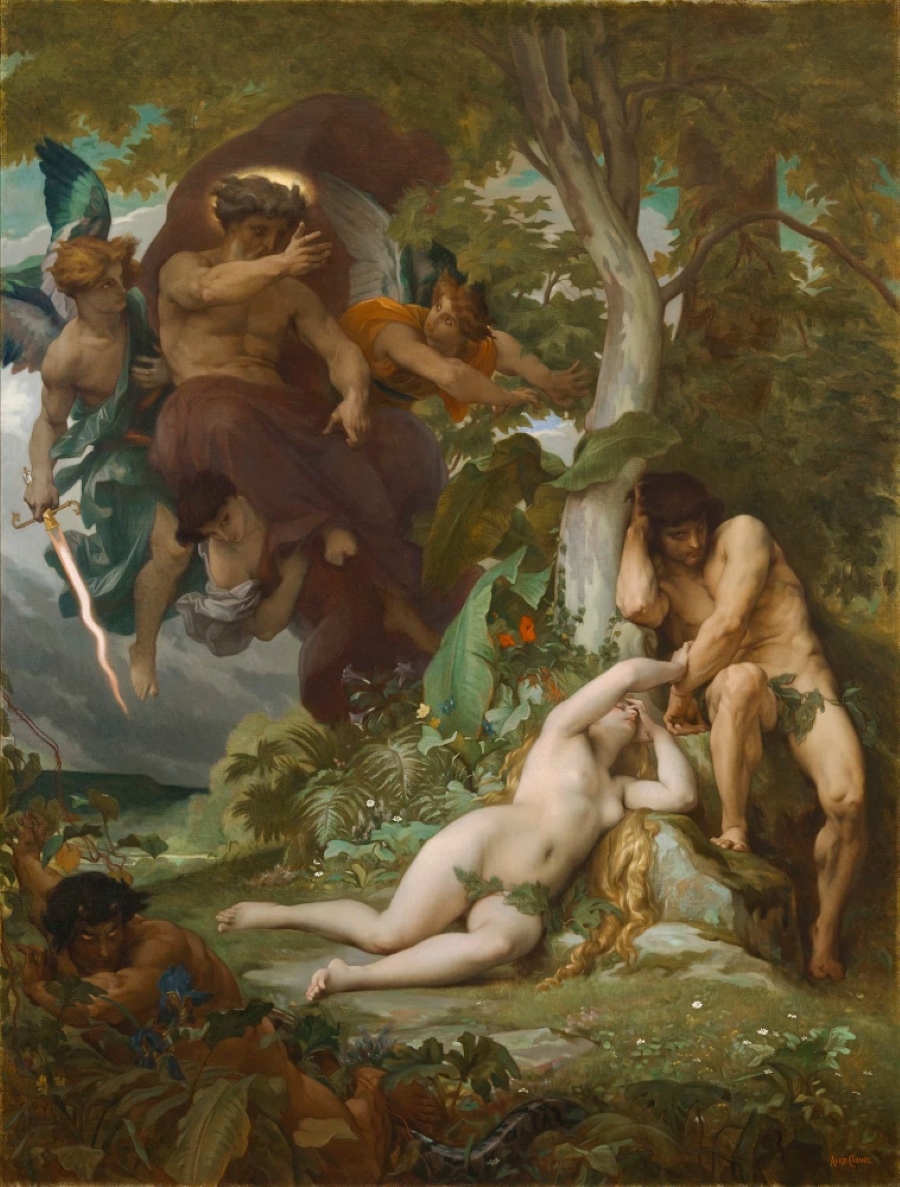 Paradise Lost, Alexander Cabanel, c.1867
Paradise Lost, Alexander Cabanel, c.1867Cabanel’s inspiration for the ‘Fallen Angel’ was the poem ‘Paradise Lost’ (1667) by English poet John Milton (1608-1674). Milton began his poem with the episode in which Lucifer was already in Hell, while Cabanel decided to depict the very moment when Lucifer had fallen from Heaven. In the painting, fallen angel Lucifer is sitting on a rocky surface in a tense pose, his face hiding behind his arms. He is someone who has just lost everything, and who has gone from being the best creation of God to a rejected archangel banished to Hell.
The most alluring detail in this painting is Lucifer’s eyes, which would look simply angry and evil if it were not for a teardrop falling from his reddened eyes. It looks like he is trying to conceal his thoughts with shame. But there is still a range of emotions on his face: anger, humiliation, shame, disobedience, rejection, or even misunderstanding. These are the tears of impotence and resentment falling from his eyes.
Defying convention: An audacious portrayal of Lucifer
Lucifer by Cabanel is not just angry for being cast out, but for being rather misunderstood and rejected by his creator, in the same way the artist himself was rejected with ‘Oreste’ a year before. This painting could be the reflection of the artist’s own emotions after the rejection. But eventually ‘Fallen Angel’ by Alexander Cabanel was also rejected by the jury of Salo for being too romantic, and showing imprecise draughtsmanship and deficient execution.
What is also important to note is that artists were mostly depicting the life of Christ or other saints or angels. So the main controversy was not even surrounding Cabanel's artistic skills or style, but what the ‘Fallen Angel’ represented. It was one of the first depictions of Lucifer submitted to the Salon. Depicting a dramatic scene with the cursed angel, the scariest demon of all was a fresh breath of air for academic art but too bold for them to accept.
The French Salon and Cabanel’s romanticism
Academism, the leading style of the French Salon, widely embraced idealised depictions of mythological, biblical, or historical scenes. Everything from composition and colour to brush strokes with paint had to follow strict conservative rules. Passionate scenes were banned as they were considered too romantic. Technique, craftsmanship, perfect proportions and colours as well as the appropriate themes were the main criteria for a work of art to be accepted to the Salon.
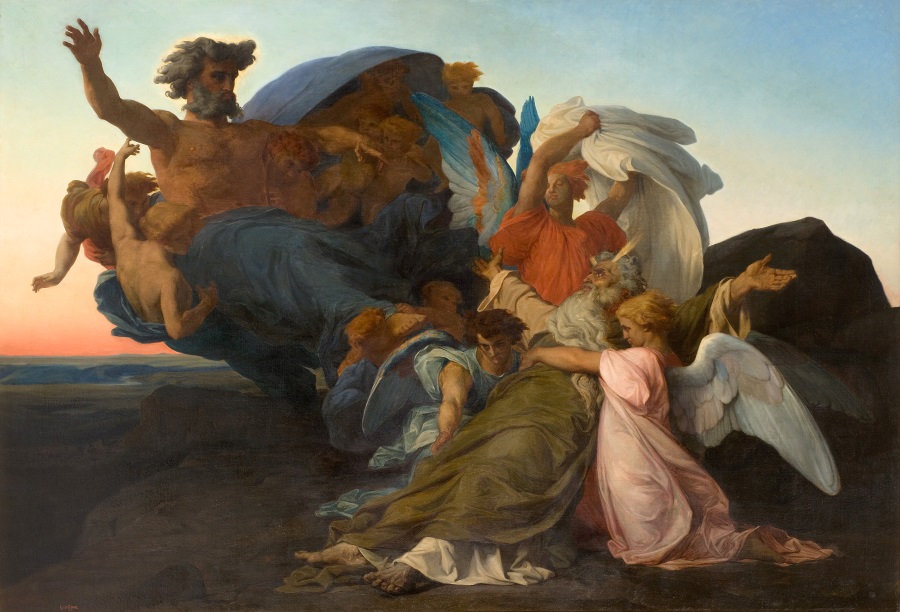 Death of Moses, Alexander Cabanel, 1850
Death of Moses, Alexander Cabanel, 1850Then, all of a sudden, Cabanel emerges with a rather inappropriate theme and passionately charged style.
That’s my reward for all the trouble I gave myself not to submit an average piece of work,
wrote Cabanel later to his friend after receiving the jury’s and critic’s reviews. Cabanel found himself rejected for not conforming to the very criteria he had denounced.
Despite the previous rejections, Cabanel managed to reclaim his fame several years later with the submission of the dramatic and monumental masterpiece, 'Death of Moses' (1851), currently housed in the Dahesh Museum of Art in New York. This triumphant work propelled him back into the spotlight, solidifying his position as one of the foremost and beloved artists of the French Academy.
Symbolic details: The intricacies of his works
Although 'Fallen Angel' received criticism for being overly passionate and romantic, it undeniably reflects the artist's mastery of academic traditions. This painting skillfully portrays a nude male figure, with meticulously rendered muscular anatomy reminiscent of Classical Greek sculptures. Cabanel's technique shines through as he presents Lucifer as a magnificently sculpted man, showcasing his expertise in academic art.
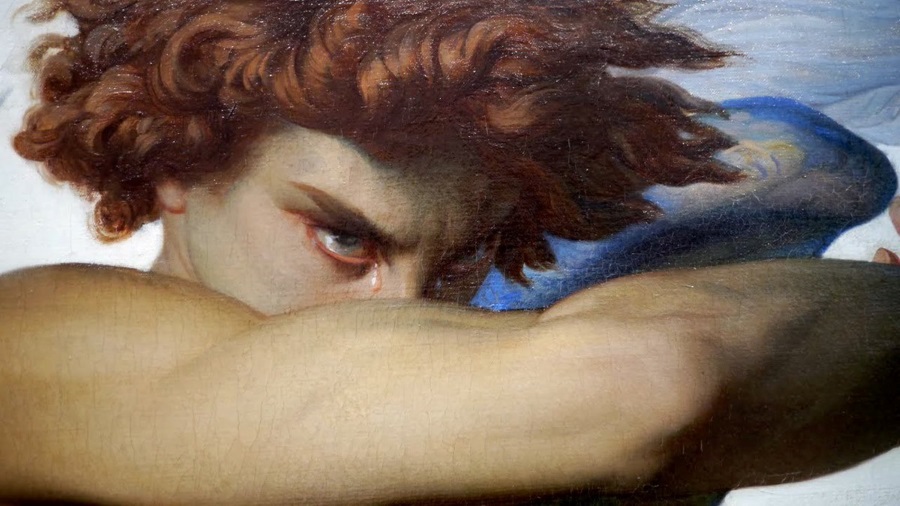 Fallen Angel’ (detail), Alexander Cabanel, 1847
Fallen Angel’ (detail), Alexander Cabanel, 1847Equally important are the details of the painting that complement the depicted story. Cabanel created a striking juxtaposition of colours, with the foreground featuring the fallen angel in a much darker hue compared to the light background where the heavenly angels reside. Lucifer's lighter-toned figure, still bound to the heavens, starkly contrasts with the dark surface upon which he sits. He is yet bound by both worlds, but the colour of his wings shows that it will not last forever. The feathers behind his back are a pristine white, while those touching the ground are noticeably darker.
Alexander Cabanel's 'Fallen Angel' continues to captivate artists and art enthusiasts alike, even to this day. Its depiction of Lucifer stands out as an enduring and intriguing representation. This artwork demonstrates that academism, despite being a conservative art movement, can produce a popular and enduring portrayal of a demon.
As an Art de Vivre subscriber, discover more inspiring paintings and 10 of the most famous artists of all time.
Photo Credits: Wikipedia Commons
